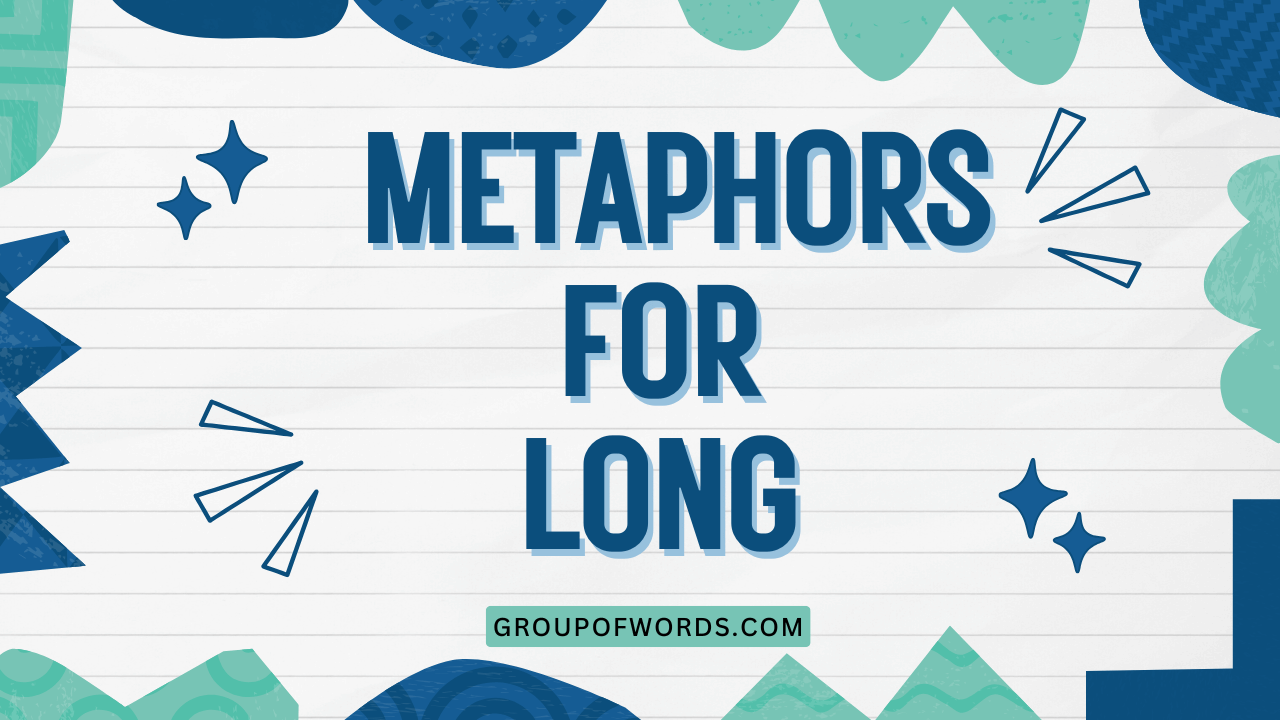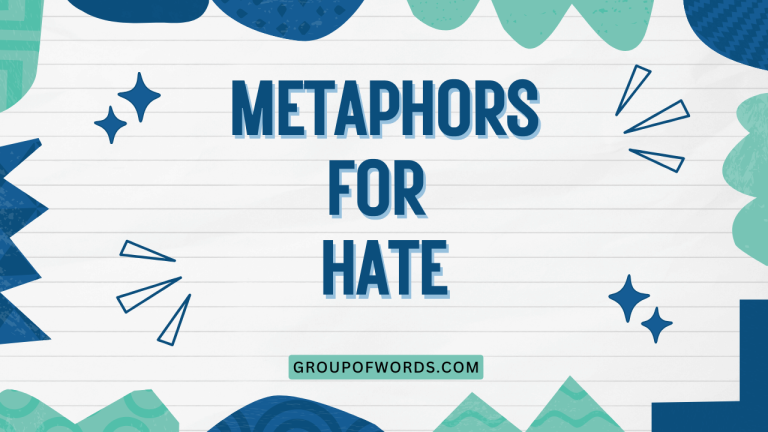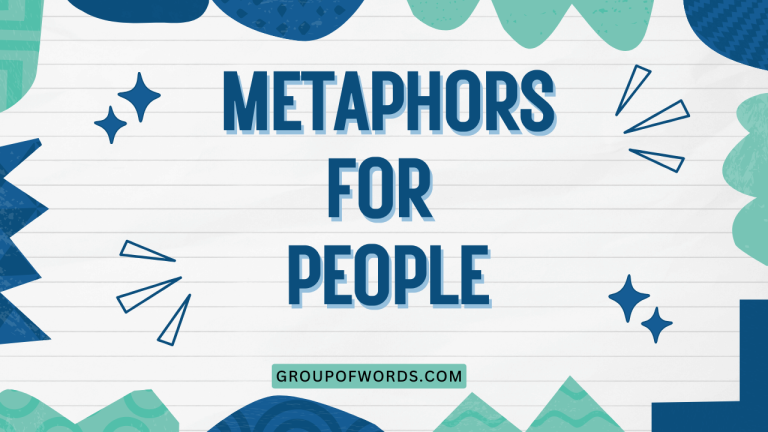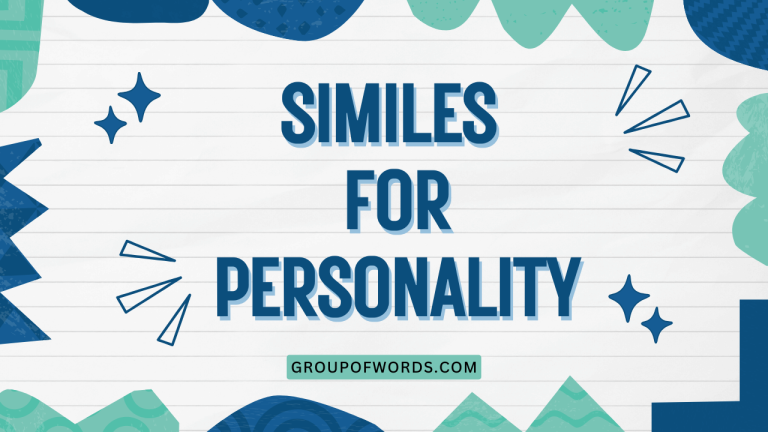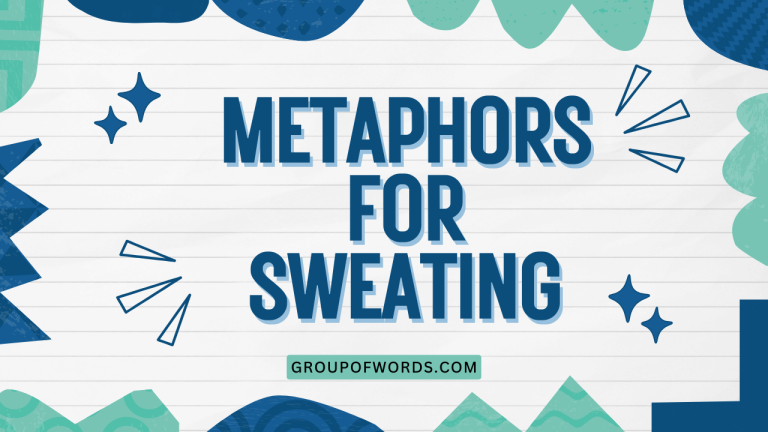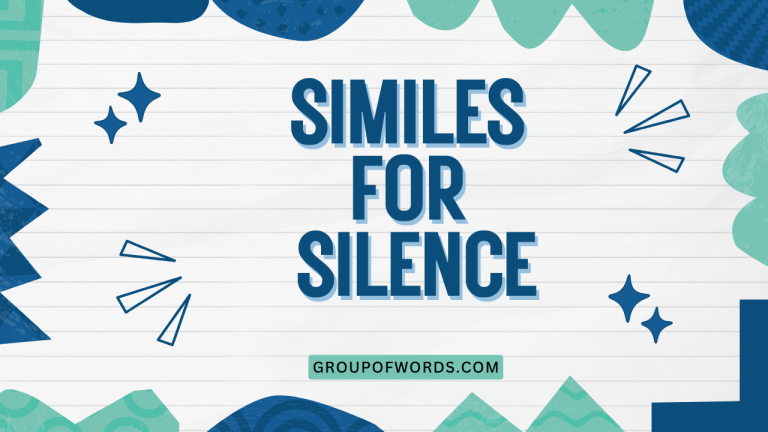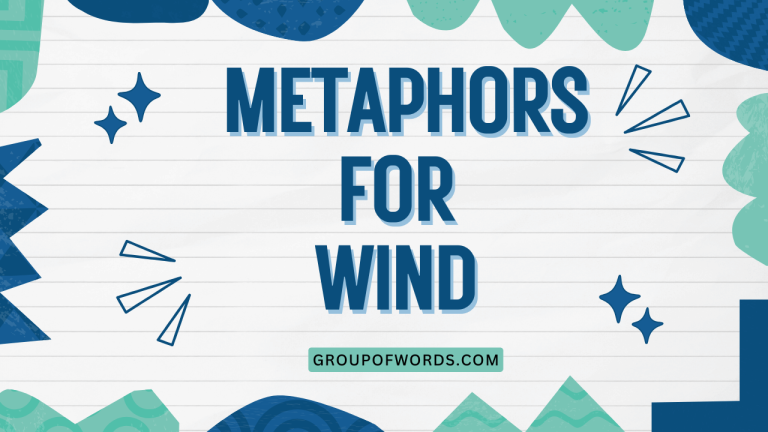Metaphors for ‘Long’: A Comprehensive Guide
Understanding how metaphors are used to describe the concept of ‘long’ can significantly enrich your English vocabulary and improve your ability to express duration, distance, and extent in a more vivid and engaging way. This article delves into the various metaphorical expressions used to convey the idea of ‘long’ across different contexts.
Whether you are an English language learner, a student of literature, or simply someone who enjoys exploring the nuances of language, this guide provides a comprehensive overview with detailed examples and practical exercises to help you master this aspect of English grammar and figurative language.
This article will explore how metaphors extend beyond literal meanings, providing depth and color to descriptions of time, distance, and more. Through clear definitions, structural breakdowns, and numerous examples, you’ll gain a solid understanding of how to use these metaphors effectively.
Furthermore, this guide addresses common errors and provides practice exercises to solidify your knowledge. Let’s embark on this linguistic journey to master the art of using metaphors for ‘long’.
Table of Contents
- Definition of Metaphors for ‘Long’
- Structural Breakdown
- Types and Categories
- Examples
- Usage Rules
- Common Mistakes
- Practice Exercises
- Advanced Topics
- FAQ
- Conclusion
Definition of Metaphors for ‘Long’
A metaphor is a figure of speech in which a word or phrase is applied to an object or action to which it is not literally applicable. It is a comparison that, instead of stating a similarity directly (like a simile does with ‘like’ or ‘as’), implies one.
When we talk about metaphors for ‘long’, we are referring to expressions that use figurative language to describe something that extends for a considerable duration, distance, or degree. These metaphors often rely on abstract concepts to convey the idea of length, making the description more vivid and impactful.
Metaphors for ‘long’ can encompass various aspects: the length of time (e.g., “a seemingly endless wait”), the physical distance (e.g., “a road stretching into eternity”), or the extent of something (e.g., “a problem that cast a long shadow”). The function of these metaphors is to provide a more engaging and imaginative way to express the concept of being long, adding depth and emotional resonance to the communication.
Understanding these metaphors involves recognizing the implied comparison and appreciating the context in which they are used.
The context plays a crucial role in interpreting metaphors for ‘long.’ For instance, the phrase “a marathon meeting” doesn’t literally mean the meeting involved running; instead, it implies the meeting was lengthy and possibly exhausting, similar to running a marathon. Similarly, “a long shot” in gambling or sports implies that the probability of success is low, but the potential reward is high, metaphorically stretching the odds.
Recognizing these nuances is essential for both understanding and effectively using metaphors for ‘long’.
Structural Breakdown
The structure of metaphors for ‘long’ typically involves two key elements: the **tenor** and the **vehicle**. The tenor is the subject to which the metaphor refers (i.e., the ‘long’ aspect), while the vehicle is the object or concept used to describe the tenor.
The relationship between the tenor and the vehicle is what creates the metaphorical meaning.
For example, in the metaphor “a lifetime commitment,” the tenor is the duration of the commitment, and the vehicle is ‘a lifetime’. The structure implies that the commitment is as long and significant as an entire lifetime.
The effectiveness of the metaphor lies in the audience’s ability to connect the vehicle (lifetime) with the intended meaning (long duration). This connection relies on shared cultural understanding and common experiences.
The grammatical structure can vary, but often includes adjectives, nouns, and verbs that contribute to the sense of length or duration. Adjectives like ‘endless,’ ‘eternal,’ or ‘never-ending’ directly modify the tenor.
Nouns such as ‘marathon,’ ‘age,’ or ‘era’ are used as vehicles to represent long periods. Verbs like ‘stretch,’ ‘extend,’ or ‘linger’ describe actions that convey the sense of something lasting or continuing for a considerable time.
Consider the following breakdown:
- Tenor (What is ‘long’): Time, Distance, Extent
- Vehicle (The metaphor itself): Endless, Marathon, Stretching
- Structure: Adjective + Noun (endless journey), Noun as Adjective (marathon meeting), Verb + Adverb (stretching endlessly)
Understanding this structural framework allows for a more analytical approach to both interpreting and creating metaphors for ‘long’. By identifying the tenor and the vehicle, one can better appreciate the intended meaning and the effectiveness of the metaphorical expression.
Types and Categories
Metaphors for ‘long’ can be broadly categorized into three main types, each relating to a different aspect of the concept of length:
- Time and Duration
- Distance and Length
- Extent and Degree
Time and Duration
These metaphors are used to describe periods of time that are perceived as long. They often involve comparisons to abstract concepts such as eternity, ages, or periods known for their lengthiness.
The primary function is to convey not just the duration but also the feeling associated with that duration, such as boredom, anticipation, or exhaustion.
Examples include phrases like “an eternity,” “ages,” “a lifetime,” “a month of Sundays,” and “a never-ending story.” Each of these expressions suggests a period that feels significantly longer than its actual measurement. The emotional impact is often tied to the context; waiting for test results might feel like an eternity, while reminiscing about a pleasant vacation might feel like it was “just yesterday.”
These metaphors frequently rely on exaggeration to amplify the sense of duration. The use of words like ‘never-ending’ and ‘eternal’ implies a limitless quality, emphasizing the perceived length of the time period.
The effectiveness of these metaphors lies in their ability to resonate with common human experiences and emotions related to the passage of time.
Distance and Length
Metaphors in this category describe physical distances or lengths that are perceived as long. They often involve comparisons to vast landscapes, journeys, or objects known for their extended size.
The purpose is to convey the sense of distance and the effort or time required to traverse it.
Examples include phrases like “a road stretching into eternity,” “miles to go before I sleep,” “an endless highway,” and “a long and winding road.” These expressions evoke a sense of vastness and the challenges associated with covering a significant distance. The emotional impact can range from a feeling of adventure and exploration to a sense of weariness and determination.
The use of imagery is crucial in these metaphors. Visual descriptions of roads, highways, and landscapes help the audience visualize the distance and imagine the journey.
The effectiveness of these metaphors lies in their ability to tap into common human experiences of travel and exploration, creating a vivid and relatable sense of length.
Extent and Degree
These metaphors are used to describe the extent or degree of something that is perceived as significant or far-reaching. They often involve comparisons to abstract concepts such as shadows, depths, or expanses.
The function is to convey the magnitude or impact of something, emphasizing its importance or influence.
Examples include phrases like “a long shadow,” “deep-seated roots,” “a wide expanse,” and “a far-reaching impact.” These expressions suggest that something has a significant and lasting effect. The emotional impact can range from a feeling of concern and apprehension to a sense of awe and admiration.
These metaphors often rely on the idea of something extending beyond its immediate boundaries. A “long shadow” implies that the effects of something continue to be felt long after the event itself.
“Deep-seated roots” suggest that something is firmly established and difficult to remove. The effectiveness of these metaphors lies in their ability to convey the magnitude and lasting influence of something, making it more impactful and memorable.
Examples
To further illustrate the use of metaphors for ‘long’, here are several examples categorized by the types discussed earlier.
Time and Duration Examples
The following table illustrates various metaphors used to describe long durations of time. Each example provides a sentence showcasing the metaphor in context, along with a brief explanation of its meaning.
| Metaphor | Example Sentence | Explanation |
|---|---|---|
| An eternity | Waiting for the results felt like an eternity. | Implies a very long and seemingly endless wait. |
| Ages | It’s been ages since we last saw each other. | Suggests a considerable amount of time has passed. |
| A lifetime | It felt like a lifetime to complete the project. | Indicates a very long and enduring experience. |
| A month of Sundays | It will take a month of Sundays to fix this problem. | Emphasizes the difficulty and time required. |
| A never-ending story | The negotiations turned into a never-ending story. | Suggests a process that continues indefinitely. |
| A drawn-out process | The legal proceedings were a drawn-out process. | Implies the process took much longer than expected. |
| A protracted delay | We experienced a protracted delay due to the weather. | Indicates a delay that extended for a significant time. |
| A lengthy discussion | The committee held a lengthy discussion about the budget. | Suggests the discussion was longer than usual. |
| A prolonged absence | Her prolonged absence caused considerable concern. | Implies she was away for a long and worrying time. |
| A seemingly endless wait | The job interview involved a seemingly endless wait. | Suggests the wait felt extremely long and tedious. |
| An epoch | The Victorian era was an epoch of great change. | References a significant and extended period in history. |
| An age of enlightenment | The Renaissance was an age of enlightenment. | Indicates a long period marked by significant progress. |
| A historical period | Studying the Roman Empire covers a vast historical period. | Refers to a long span of time in the past. |
| A timeless classic | Shakespeare’s plays are considered timeless classics. | Implies the works have enduring relevance and appeal. |
| A lasting legacy | His contributions left a lasting legacy. | Suggests the impact will continue for a long time. |
| A protracted period | The company went through a protracted period of financial difficulty. | Indicates a lengthy and challenging time. |
| A drawn-out affair | The investigation turned into a drawn-out affair. | Implies the investigation took much longer than anticipated. |
| A prolonged period of silence | There was a prolonged period of silence after the announcement. | Suggests the silence lasted for a significant time. |
| A long-standing tradition | The festival is a long-standing tradition in the community. | Indicates the tradition has existed for many years. |
| A never-ending cycle | Poverty can create a never-ending cycle. | Suggests a problem that continues without resolution. |
| A glacial pace | The project moved at a glacial pace. | Implies the project was moving very slowly. |
| A dog’s age | I haven’t seen him in a dog’s age. | Suggests a very long time has passed. |
| Since the year dot | He’s been working here since the year dot. | Means he’s been working there since a very long time ago. |
| From time immemorial | This tradition has been followed from time immemorial. | Indicates the tradition has been followed since ancient times. |
| A geological time scale | The Earth’s history is measured on a geological time scale. | Refers to extremely long periods in Earth’s history. |
Distance and Length Examples
The following table presents metaphors used to describe long distances or lengths. Each example provides a sentence showcasing the metaphor in context, along with a brief explanation of its meaning.
| Metaphor | Example Sentence | Explanation |
|---|---|---|
| A road stretching into eternity | The road stretching into eternity seemed never-ending. | Implies a very long and seemingly endless road. |
| Miles to go before I sleep | He knew he had miles to go before he could sleep. | Suggests a long journey or task remains. |
| An endless highway | The endless highway led to unknown destinations. | Indicates a very long and continuous road. |
| A long and winding road | Life is often a long and winding road with many turns. | Emphasizes the challenges and changes in life’s journey. |
| A considerable distance | They had to travel a considerable distance to reach the village. | Suggests a significant amount of ground to cover. |
| An extensive coastline | California has an extensive coastline. | Implies the coastline is very long and varied. |
| A far-off land | She dreamed of visiting a far-off land. | Indicates a place that is very distant and exotic. |
| A lengthy stretch of road | The lengthy stretch of road was deserted at night. | Suggests a long and uninterrupted section of road. |
| An extended journey | Their extended journey took them through several countries. | Implies the journey was longer than expected. |
| A sprawling landscape | The sprawling landscape was dotted with farms. | Suggests a wide and expansive area. |
| A marathon journey | The hike felt like a marathon journey. | Implies the journey was very long and tiring. |
| A world away | The island felt like a world away from the city. | Suggests the place is very remote and different. |
| A boundless expanse | The ocean is a boundless expanse of water. | Indicates an area with no clear boundaries. |
| A far-reaching vista | The mountain offered a far-reaching vista. | Suggests a view that extends very far. |
| A long and arduous trek | They embarked on a long and arduous trek through the mountains. | Implies a difficult and lengthy journey. |
| An endless horizon | The desert stretched to an endless horizon. | Indicates a horizon that seems to go on forever. |
| A vast wilderness | The explorers ventured into the vast wilderness. | Suggests a large and untamed area. |
| A long and lonely road | He walked a long and lonely road after the breakup. | Implies a difficult and isolating journey. |
| A lengthy pilgrimage | The pilgrims undertook a lengthy pilgrimage to the holy site. | Suggests a long and meaningful journey. |
| An extensive network of trails | The park has an extensive network of trails. | Indicates a large and interconnected system of paths. |
| Stretching as far as the eye can see | The plains stretched as far as the eye can see. | Implies a very long distance. |
| The long haul | This is a project for the long haul. | Indicates a project that will take a significant amount of time and effort. |
| A country mile | It’s a country mile to the nearest town. | Suggests a very long distance, especially in rural areas. |
| The ends of the earth | He would travel to the ends of the earth for her. | Means he would go to any distance, no matter how far. |
| From pole to pole | The expedition covered the region from pole to pole. | Indicates a journey spanning the entire length of the Earth. |
Extent and Degree Examples
The following table provides metaphors used to describe the extent or degree of something. Each example provides a sentence showcasing the metaphor in context, along with a brief explanation of its meaning.
| Metaphor | Example Sentence | Explanation |
|---|---|---|
| A long shadow | The scandal cast a long shadow over his career. | Implies a lasting negative impact. |
| Deep-seated roots | The problem has deep-seated roots in the community. | Suggests the problem is firmly established and difficult to remove. |
| A wide expanse | The research covered a wide expanse of topics. | Indicates a broad and extensive range. |
| A far-reaching impact | The new policy had a far-reaching impact on the industry. | Emphasizes the significant and widespread effect. |
| A considerable influence | She had a considerable influence on his decision. | Suggests a significant degree of impact. |
| An extensive knowledge | He has an extensive knowledge of history. | Implies a broad and detailed understanding. |
| A far-off goal | Retirement seemed like a far-off goal. | Indicates a goal that is distant and difficult to achieve. |
| A lengthy debate | The proposal sparked a lengthy debate in parliament. | Suggests the debate was prolonged and extensive. |
| An extended discussion | They had an extended discussion about the implications. | Implies the discussion was longer and more detailed than usual. |
| A sprawling empire | The Roman Empire was a sprawling empire. | Suggests a vast and expansive territory. |
| A marathon effort | Completing the project required a marathon effort. | Implies a sustained and intense level of effort. |
| A boundless enthusiasm | She approached the task with boundless enthusiasm. | Suggests an unlimited amount of passion and energy. |
| A far-reaching consequence | The decision had far-reaching consequences. | Indicates a significant and widespread effect. |
| A long and complex history | The region has a long and complex history. | Suggests a history that is extensive and intricate. |
| A lengthy process of negotiation | The contract required a lengthy process of negotiation. | Implies the negotiation was prolonged and detailed. |
| A far-reaching reform | The government implemented a far-reaching reform. | Indicates a reform that has a significant and widespread impact. |
| A long and difficult struggle | They faced a long and difficult struggle for independence. | Suggests a prolonged and challenging effort. |
| A lengthy period of economic growth | The country experienced a lengthy period of economic growth. | Implies the economic growth lasted for a significant time. |
| A far-reaching network of contacts | He built a far-reaching network of contacts in the industry. | Indicates a broad and influential group of connections. |
| A long and hard road | Success is often a long and hard road. | Suggests the path to success is challenging and time-consuming. |
| A long arm of the law | The long arm of the law eventually caught up with him. | Implies the reach and power of the legal system. |
| A long shot | Investing in that company is a long shot. | Suggests a low probability of success. |
| A long face | He had a long face after hearing the news. | Means he looked sad or disappointed. |
| A long fuse | He has a long fuse, so it takes a lot to make him angry. | Implies he is very patient. |
| A long memory | She has a long memory and never forgets anything. | Indicates she remembers things very well. |
Usage Rules
When using metaphors for ‘long’, it’s important to adhere to certain rules to ensure clarity and effectiveness. Here are some key guidelines:
- Context is Key: Ensure the metaphor is appropriate for the context. A metaphor that works well in casual conversation might be unsuitable for formal writing.
- Audience Awareness: Consider your audience’s familiarity with the metaphor. Avoid obscure or culturally specific metaphors that they may not understand.
- Clarity: The metaphor should enhance understanding, not confuse the reader. If the comparison is too abstract or convoluted, it will lose its impact.
- Originality: While common metaphors can be effective, strive for originality to make your writing more engaging. Overused metaphors can become clichés and lose their impact.
- Consistency: Maintain consistency in your metaphorical language. Mixing metaphors can create confusion and weaken your message.
- Avoid Mixed Metaphors: Ensure that the images created by the metaphor are consistent and do not clash. For example, avoid saying “We need to nip it in the bud before it snowballs,” as the images of nipping something in the bud and a snowball rolling downhill do not align well.
- Consider the Tone: Metaphors can significantly influence the tone of your writing. Choose metaphors that align with the desired tone, whether it’s serious, humorous, or reflective.
By following these rules, you can effectively use metaphors for ‘long’ to enhance your communication and make your writing more vivid and engaging.
Common Mistakes
Learners often make several common mistakes when using metaphors. Understanding these can help you avoid them and use metaphors more effectively.
| Mistake | Incorrect Example | Correct Example | Explanation |
|---|---|---|---|
| Mixing Metaphors | We need to nip it in the bud before it snowballs. | We need to address the issue before it snowballs. | Mixing ‘nip it in the bud’ (stop something early) with ‘snowballs’ (grows rapidly) creates a confusing image. |
| Using Clichés | It took a long and winding road to get here. | The journey to success was filled with unexpected challenges. | “Long and winding road” is an overused metaphor that lacks originality. |
| Inappropriate Context | The data analysis was an eternity. | The data analysis took a considerable amount of time. | Using “an eternity” is too informal for a technical context. |
| Lack of Clarity | The project was a sea of troubles. | The project was fraught with numerous difficulties. | “A sea of troubles” is vague; “fraught with numerous difficulties” is more specific. |
| Overuse of Metaphor | Life is a highway, and I’m driving in the fast lane, but sometimes the road is a rollercoaster. | Life is a journey with its ups and downs. | Too many metaphors in one sentence can be overwhelming and confusing. |
| Literal Interpretation | He said it was a long shot, so I brought my camera. | He said it was a long shot, meaning the chances of success were slim. | Misunderstanding the figurative meaning of ‘long shot’. |
| Using Culturally Specific Metaphors Without Explanation | It took him a month of Sundays to finish the job. | It took him a very long time to finish the job. | The phrase ‘month of Sundays’ might not be understood by everyone. |
By being aware of these common mistakes, you can avoid them and use metaphors more effectively to enhance your writing and communication.
Practice Exercises
To solidify your understanding of metaphors for ‘long’, complete the following exercises.
Exercise 1: Identifying Metaphors
Identify the metaphor in each sentence and explain its meaning.
| Question | Answer |
|---|---|
| 1. The legal battle was a drawn-out affair. | Metaphor: Drawn-out affair. Meaning: The legal battle took much longer than expected. |
| 2. His influence cast a long shadow over the industry. | Metaphor: Long shadow. Meaning: His influence had a lasting and significant impact. |
| 3. The project moved at a glacial pace. | Metaphor: Glacial pace. Meaning: The project progressed very slowly. |
| 4. It felt like an eternity waiting for the train. | Metaphor: An eternity. Meaning: The wait felt extremely long and endless. |
| 5. The road ahead was a long and winding one. | Metaphor: Long and winding. Meaning: The journey ahead was challenging and uncertain. |
| 6. The investigation unearthed deep-seated corruption. | Metaphor: Deep-seated. Meaning: The corruption was firmly established and difficult to remove. |
| 7. She has miles to go before she sleeps. | Metaphor: Miles to go. Meaning: She has many tasks and responsibilities to complete. |
| 8. The debate stretched into a lengthy discussion. | Metaphor: Lengthy discussion. Meaning: The debate was prolonged and detailed. |
| 9. His absence created a prolonged period of silence. | Metaphor: Prolonged period. Meaning: The silence lasted for a significant amount of time. |
| 10. Their love story is a timeless classic. | Metaphor: Timeless classic. Meaning: Their love story has enduring relevance. |
Exercise 2: Using Metaphors in Sentences
Complete the following sentences using an appropriate metaphor for ‘long’.
| Question | Answer |
|---|---|
| 1. The negotiation process was _____. | The negotiation process was a protracted ordeal. |
| 2. The effects of the recession had _____. | The effects of the recession had a far-reaching impact. |
| 3. Waiting for the concert to start felt like _____. | Waiting for the concert to start felt like an eternity. |
| 4. The journey to the summit was _____. | The journey to the summit was a long and arduous trek. |
| 5. His dedication to the cause left _____. | His dedication to the cause left a lasting legacy. |
| 6. The project became _____. | The project became a never-ending story. |
| 7. The lecture was _____. | The lecture was a lengthy and detailed presentation. |
| 8. The old house has _____. | The old house has deep-seated roots in the community. |
| 9. The desert stretched out before them, _____. | The desert stretched out before them, an endless expanse. |
| 10. The trial was _____. | The trial was a drawn-out affair that exhausted everyone involved. |
Exercise 3: Correcting Misused Metaphors
Identify and correct the misused metaphor in each sentence.
| Question | Answer |
|---|---|
| 1. The problem was nipped in the bud before it blossomed into a forest fire. | Corrected: The problem was addressed early before it escalated into a major crisis. |
| 2. His career was a marathon of hurdles and quicksand. | Corrected: His career was a long and challenging journey filled with obstacles. |
| 3. The investigation was a bottomless ocean of red tape. | Corrected: The investigation was a complex maze of bureaucratic procedures. |
| 4. The task was a walk in the park, but it took an eternity. | Corrected: The task was simple, but it took a surprisingly long time. |
| 5. The project was a sea of troubles that snowballed from the start. | Corrected: The project was fraught with difficulties that quickly escalated. |
| 6. The lecture stretched for miles and was as deep as the ocean. | Corrected: The lecture was very long and covered many complex topics. |
| 7. Waiting for the results felt like climbing Mount Everest, but it was just a long shot. | Corrected: Waiting for the results felt incredibly challenging, but the chances of success were slim. |
| 8. The meeting was a never-ending rollercoaster of ups and downs. | Corrected: The meeting was a long and unpredictable process with many highs and lows. |
| 9. His influence cast a long shadow, but it was just a drop in the bucket. | Corrected: His influence had a significant impact, but it was not enough to solve the problem entirely. |
| 10. The journey was a long shot that stretched for miles into the future. | Corrected: The journey was a difficult undertaking with uncertain prospects that would take a long time to complete. |
Advanced Topics
For advanced learners, exploring the nuances of creating original and impactful metaphors for ‘long’ can be a rewarding endeavor. This involves understanding the cultural and historical context of metaphors, as well as the psychological impact they have on the audience.
Consider the use of extended metaphors, where a single metaphor is developed throughout a piece of writing, creating a cohesive and compelling narrative. For example, a writer might use the metaphor of a ‘marathon’ to describe a complex project, consistently referring to different stages as ‘mile markers’ and challenges as ‘hills to climb’.
Another advanced technique is the use of subverted metaphors, where a common metaphor is twisted or used in an unexpected way to create a new and thought-provoking meaning. This can involve taking a familiar metaphor and applying it to an unfamiliar context, or challenging the conventional interpretation of the metaphor.
Furthermore, exploring the use of metaphors in different genres and styles of writing can enhance your understanding of their versatility. Metaphors in poetry often rely on vivid imagery and emotional resonance, while metaphors in scientific writing may be used to simplify complex concepts and make them more accessible.
Understanding these differences can help you tailor your metaphorical language to suit the specific needs of your audience and purpose.
FAQ
Here are some frequently asked
questions about using metaphors for ‘long’:
What is the difference between a metaphor and a simile?
A metaphor directly equates two things without using ‘like’ or ‘as,’ while a simile uses ‘like’ or ‘as’ to make a comparison. For example, “The project was a marathon” is a metaphor, while “The project was like a marathon” is a simile.
How can I avoid using clichés when creating metaphors for ‘long’?
To avoid clichés, try to think of original comparisons that are specific to the context. Instead of saying “It took a long and winding road,” try to think of a more unique image that captures the specific challenges and experiences involved.
Brainstorming and exploring different angles can help you come up with fresh and engaging metaphors.
Are there any cultural considerations when using metaphors?
Yes, metaphors can be culturally specific, and what resonates in one culture may not in another. Be mindful of your audience and avoid using metaphors that may be unfamiliar or have different connotations in other cultures.
If you’re writing for a diverse audience, consider using more universal metaphors or providing explanations for culturally specific ones.
How can I improve my ability to create effective metaphors?
Practice is key. Read widely and pay attention to how other writers use metaphors.
Try to identify the tenor and vehicle in different metaphorical expressions and analyze their effectiveness. Experiment with creating your own metaphors and get feedback from others.
The more you practice, the better you’ll become at crafting impactful and original metaphors.
When is it appropriate to use metaphors in writing?
Metaphors are appropriate when you want to add depth, color, and emotional resonance to your writing. They can be particularly effective in creative writing, persuasive writing, and explanatory writing where you want to simplify complex concepts.
However, it’s important to use them judiciously and ensure they enhance understanding rather than create confusion.
Conclusion
Mastering the art of using metaphors for ‘long’ can significantly enhance your communication skills and make your writing more engaging and impactful. By understanding the different types of metaphors, adhering to usage rules, and avoiding common mistakes, you can effectively convey the sense of length in various contexts.
Practice the exercises provided and continue to explore the nuances of metaphorical language to further refine your abilities. With dedication and creativity, you can unlock the power of metaphors to express the concept of ‘long’ in vivid and memorable ways.
